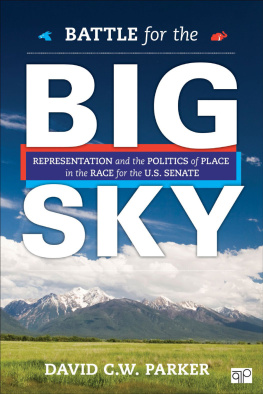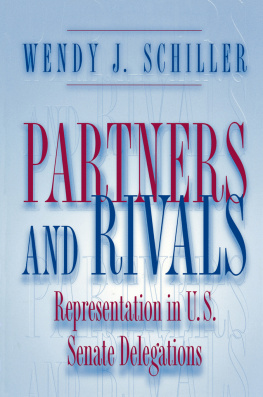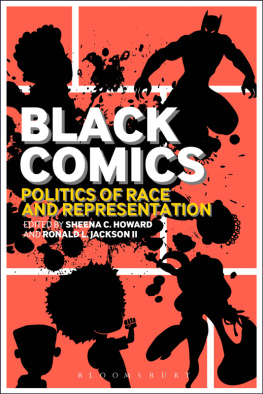FOR INFORMATION:
CQ Press
An Imprint of SAGE Publications, Inc.
2455 Teller Road
Thousand Oaks, California 91320
E-mail: order@sagepub.com
SAGE Publications Ltd.
1 Oliver's Yard
55 City Road
London EC1Y 1SP
United Kingdom
SAGE Publications India Pvt. Ltd.
B 1/I 1 Mohan Cooperative Industrial Area
Mathura Road, New Delhi 110 044
India
SAGE Publications Asia-Pacific Pte. Ltd.
3 Church Street
#10-04 Samsung Hub
Singapore 049483
Copyright 2015 by CQ Press, an Imprint of SAGE Publications, Inc. CQ Press is a registered trademark of Congressional Quarterly Inc.
All rights reserved. No part of this book may be reproduced or utilized in any form or by any means, electronic or mechanical, including photocopying, recording, or by any information storage and retrieval system, without permission in writing from the publisher.
Printed in the United States of America.
A catalog record of this book is available from the Library of Congress.
ISBN 978-1-4833-6863-4 (pbk)
This book is printed on acid-free paper.
14 15 16 17 18 10 9 8 7 6 5 4 3 2 1
Acquisitions: Sarah Calabi
Editorial Assistant: Raquel Christie
Production Editor: Bennie Clark Allen
Copy Editor: Michelle Ponce
Typesetter: C&M Digitals (P) Ltd.
Proofreader: Laura Webb
Indexer: Terri Corry
Cover Designer: Gail Buschman
Marketing Manager: Amy Whitaker
Preface
There are many reasons to write a book on a competitive Senate campaign and congressional representation. Mine boil down to three: to show the real consequences of representational activities undertaken by members of Congress, to demonstrate how campaigns can matter, and because I could. As a political scientist, I study how members of Congress interact with their constituents andthrough that researchhave come to believe that member interactions with constituents have clear electoral consequences. Trips home, electronic newsletters sent, press releases issued, and casework undertaken on behalf of constituents attempting to navigate a complicated federal bureaucracy are essential to building a lasting and trusting relationship with the folks back home. The 2012 Montana Senate race provided an interesting test of the proposition that these interactions matter because the two candidates were incumbents representing the same geographic space. Both had served Montanans in Congress during the same period, and both had access to similar tools with which to build trust with their constituents. How did Republican Congressman Denny Rehberg and Democratic Senator Jon Tester engage with Montanans in their official capacities, and which interactions generated a deeper and more effective connection? Finally, would the disparity in official resources between a House member representing a state alone and a United States senator affect how Montanans perceived the two candidates? This book shows how the home styles first documented by political scientist Richard Fenno nearly four decades ago still matter in a very different political era dominated by polarized political parties and social media.
If representational activities matter and generate impressions among constituents, the campaigns undertaken by members of Congress bolster and solidify those impressions in the minds of voters. Candidates raise millions of dollars in Senate races because they believe that efforts to communicate with voters about their records and those of their opponents have consequences for election outcomes. Political science, however, has not been so sure that campaigns affect election outcomes. In fact, much of the existing scholarship suggests that campaigns do not matter much at all. What matters most are the fundamentals underlying each congressional race, including whether there is an incumbent (who usually wins), the state of the economy, the popularity of the president, whether the incumbent shares the president's party, the partisan leanings of individual voters, and the existence of a presidential campaign. I argue that while campaigns very often don't matter because many House and Senate races are simply not competitive in the first place, in competitive elections they absolutely can make the difference between winning and losing. In this book, I show how.
Ever since I read Fenno's pioneering work as an undergraduate, I hoped I would have the opportunity in my career to soak and poke my way through a campaign as he did. Doing research like Fenno's carries risks: It is time intensive and requires extensive travel and considerable effort sorting through voluminous materials. In a discipline increasingly measuring research productivity by methodologically heavy peer-reviewed articles, it seemed too much of a gamble for junior faculty. A prominent scholar reviewing the impact of Fenno's collective work notes, Everyone cites Fenno, but very few people do that kind of work. There was remarkably little follow through.1 Compounding the problem of replicating his method is the changing nature of a political landscape that is less trusting and more polarized.
Serendipity played no small role in the emergence of this project. I moved to Montana two years after Senator Jon Tester had beaten a scandal-tarnished incumbent in the closest Senate race of 2006. Political forecasters anticipated that Tester's 2012 reelection would be competitive and close. As a newly minted Montanan, I discovered how small and intimate the state really is. Republican Congressman Denny Rehberg's eldest daughter, Katie, was a student in some of my classes at Montana State. I met the congressman in 2008, and he spoke to my classes on occasion. I got to know him a bit and enjoyed learning from him.
In late January of 2011, I heard the rumors about Rehberg challenging Tester.
Participant observation still had a chance in this small state where access was the norm. Better yet, I would try to do something Fenno had not: watch the campaign from both sides as it unfolded. My career was well-positioned so that tenure was not at risk. Right place, right time, right race, right person, and right method. The stars had aligned.
Like Fenno, I spent a lot of time dipping in and out of the lives of Senator Tester and Congressman Rehberg on the campaign trail. I enjoyed unprecedented access to both campaigns, andin addition to my visits with the candidatesinterviewed nearly 50 people involved in the campaign and Montana politics. To better understand the political careers of Congressman Rehberg and Senator Tester, I closely examined the bills they sponsored, the earmarks they obtained, and the press releases both issued from their Washington offices between 2007 and 2010.











